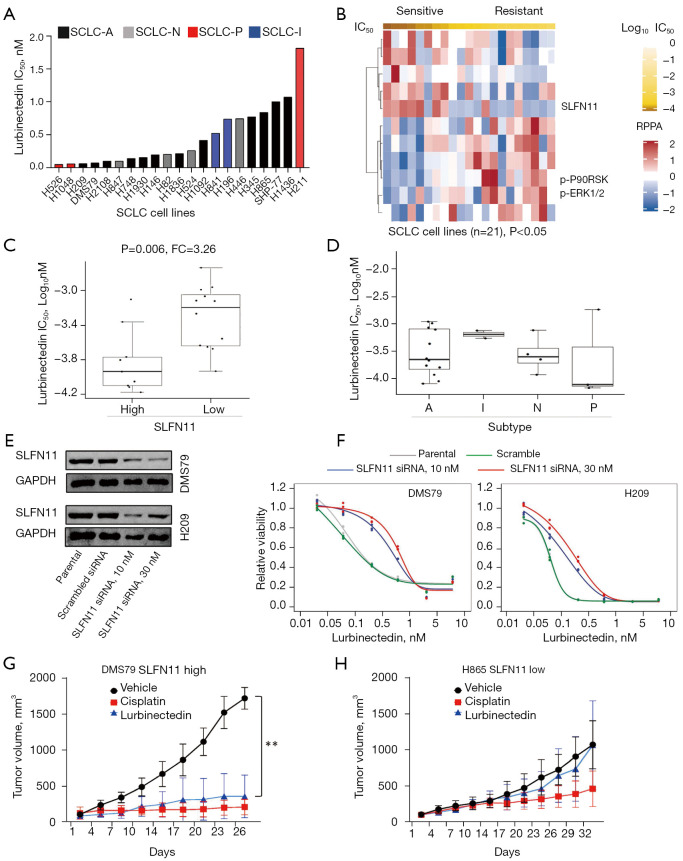Figure 1.
SLFN11 predicts sensitivity to lurbinectedin in SCLC. (A) Sensitivity of a panel of 21 human SCLC cell lines to lurbinectedin (ranked by IC50) and color coded for SCLC subtypes. (B) Spearman correlation of RPPA protein markers and IC50 values in panel of 21 cell lines (P<0.05). (C) Comparison of lurbinectedin IC50 values between cell lines with high and low SLFN11 expression by RPPA (bi-modal separation, mean ± SEM, P value by t-test). (D) Comparison of lurbinectedin IC50 values between cell lines from the four SCLC subtypes SCLA-A (n=12), -N (n=4), -P (n=3) and -I (n=2) (P values by t-test). (E) Western-blot showing knockdown of SLFN11 following siRNA DMS79 and H209 cell lines. (F) Sensitivity of cell lines following SLFN11 knockdown. (G,H) Tumor growth curves of SLFN11 high xenografts (DMS79) and SLFN11 low xenografts (H865) treated with vehicle, lurbinectedin (0.1 mg/kg), or cisplatin (6 mg/kg) (**, P=0.01 by un-paired t-test).

